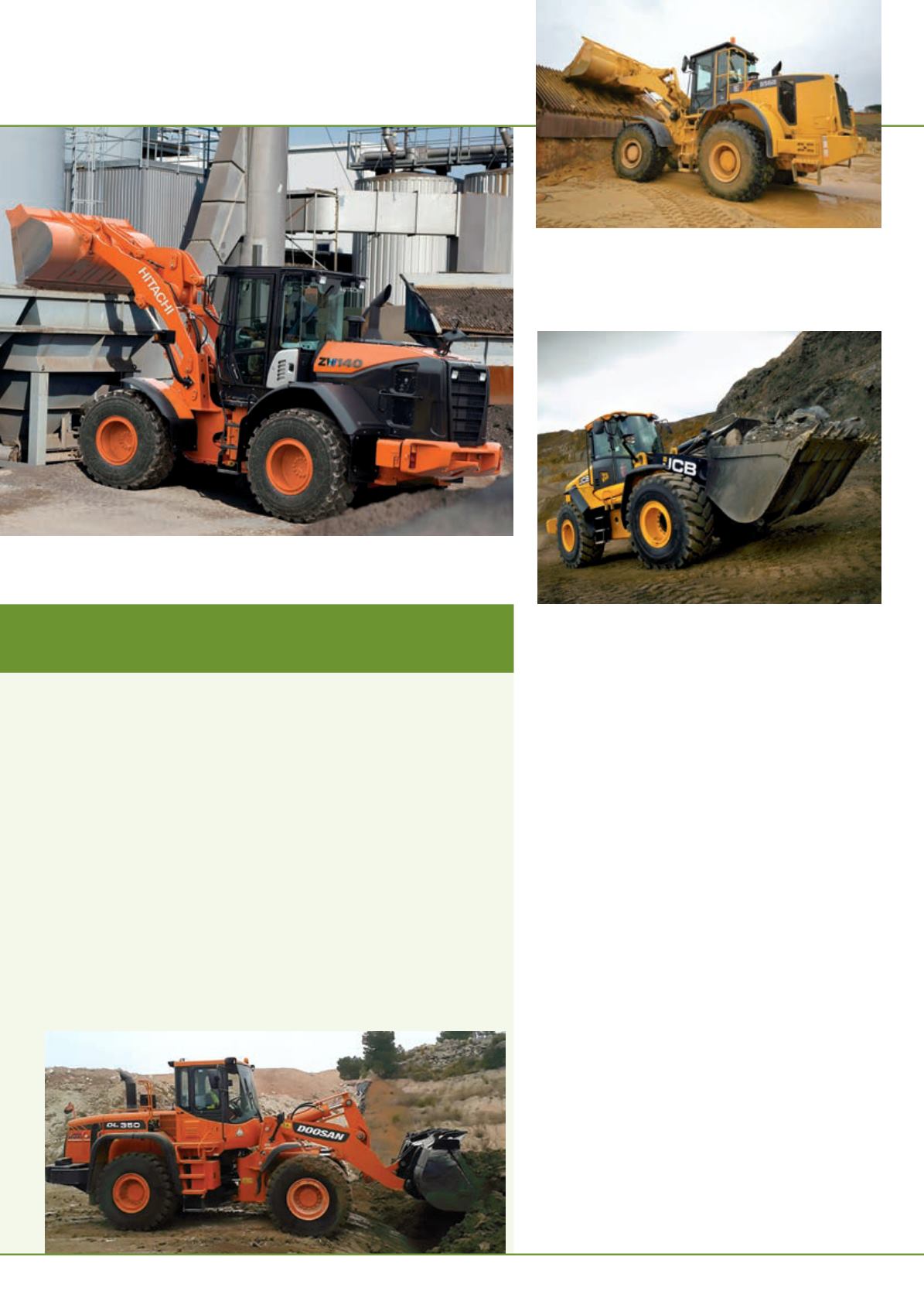
international
construction
september 2014
WHEELED LOADERS
26
Economy drive
>
perhaps unreliable as well due to fuel quality issues and the tight
tolerances inherrent inTier 3 engines.
What is interesting is that manufacturers are taking the
opportunity to design loaders with features specifically designed
for emerging markets, rather than just taking a previous year’s
European orUSmodel with a lowerTier engine.
One example of this comes from the fact that many emerging
markets are in tropical or equatorial regions, so there is often
a need for more serious engine cooling, air filtering and air
conditioning.
Meanwhile in developed markets, all the technology that has
been added to engines to reduce emissions has of course pushed
up purchase prices. In order to helpmake thismore palatable to
their customers, loadermanufacturers have been looking atways
of improving fuel efficiency and cut other running costs on new
models.
For example, Volvo’s new L250H wheeled loader, a Tier 4
Final machine, is claimed to offer 18% better fuel economy
than predecessor models thanks to the company’s Optishift
transmission system.
This covers several technologies, one of which is calledReverse
By Braking (RBB). In short cycles, operators tend to switch
rapidly between forward and reversemovements, and thismeans
the loader tends to be slowed down by the torque converter,
rather than the brakes. This is less efficient than using the
brakes and also strains the transmission. RBB gets round this
by automatically applying the service brake, even though the
operator might be using the machine in the same way with the
forward/reverse lever.
In a similar class to the 35 tonne operating weight L250H
are Caterpillars new 980M and 982M wheeled loaders, which
weigh in at 34 and 36 tonnes respectively. Again, fuel efficiency
improvements on theseTier 4 Final machines are a key feature,
F
lix, Spain-based Trans-Crispi has bought a newDoosanDL350-3wheeled loader for
arduous day-to-daywork. The family business is active in concrete supply, excavation,
container rental, wastemanagement & transportation and publicworks. However, one
of itsmain activities at themoment is the extraction, transportation and disposal of waste
sludge from a chemical plant near its headquarters.
Company director AntonioOrtega said, “We previously had another brand of wheeled
loader, but we needed onewith a higher bucket capacity for the sludge removal task, to fully
optimise our work.We also needed a toughermachine because thiswork is quite harsh, with
12 hour days on average. The newDoosanDL350-3 is an excellentmodel in terms of bucket
capacity, static tipping load capacity and standard equipment, which is very complete and
technologically advanced.
“It will beworking at the landfill and the concrete plant, loadingmaterials into containers
and trucks or transporting them at our facilities. It will also be used to perform tasks for our
clients, such as the sludge removal job.
“We are very pleasedwith themachine’s performance so far. Its power, load capacity and
speed arewell balanced. We are also happywith its safety levels, as thismodel includes all
the necessary equipment required under European regulations.”
Themachine is equippedwith a Stage IIIB-compliant Scania engine delivering 202 kW. The
transmission and axle are from ZF.
Newworkhorse
Doosan loader chosen for arduouswork
Following a successful trial Southwick, UK-based aggregates
and cement company Dudman Group has bough seven
Liugongwheeled loaders. The largest is the 888III, which
weighs in at 30 tonnes and features a 250 kW Cummins
QSM11 engine.
A hydrostatic transmission has helped reduce
fuel consumption on Hitachi’s ZW140-5 by -20%
compared to the predecessormodel.
JCB previewed its first Stage IV loaders at Hillhead. It says
the use of anMTU engine on the range-topping 457 has
contributed to a 16% overall fuel economy saving.


